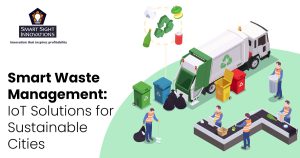
The acceptance of e-commerce has seen a wanton increase over the last few years. The earlier apprehensions of seller credibility have been laid to rest due to the many confidence building measures by online retailers. The onset of the Covid-19 pandemic has added fuel to this fire.
What was earlier seen as ‘just another’ platform to sell wares has now become an indispensable part of marketing strategies for retailers. Studies suggest that e-commerce websites generated almost 22 billion visits in June 2020. With such an exponential rise, customer expectations have also increased and so have the challenges faced by e-commerce stores.
A constant challenge faced by online stores is the ability to provide a realistic and sensory shopping experience to its customers. When customers visit physical stores, they can try out products to understand sizes and contours and know what best suits their needs – something that online shoppers cannot do.
Many businesses have turned to e-commerce development services with proven expertise in virtual reality and augmented reality applications that have provided breakthroughs in increasing the customer experience to give users a deeper a more immersive shopping experience from the comfort of their homes.
What Is the Difference Between Virtual Reality and Augmented Reality?
VR and AR are revolutionary technologies, but differ in that they use contrasting technologies, equipment and operate in distinct environments. E-commerce development services use VR to give users a sense of complete immersion in a virtual environment with the help of audio and visual devices. AR on the other hand displays digital concepts in real time. To summarize, while VR engrosses users within a virtual world, AR transforms experiences from the digital dimension to a physical arena.
How Can AR & VR Improve E-commerce Experiences?
1. Augmented Try-on
Customers are becoming increasingly discerning and love trying out outfits for optimum fit and feel before purchasing them. The anxiety of a possible back and forth after a purchase can be eliminated by trying out outfits virtually leading to a decrease in cart abandonment rates and improvement in conversion rates. AR helps shoppers make informed decisions and understand how products will work for them.
2. Product Previews
AR can also help customers perceive items in familiar surroundings. For example, if you are looking for a couch or a television that would be ideal for a given space, AR could give a realistic three-dimensional depiction of how an item would look in that space.
In such scenarios, AR even trumps a physical experience as shoppers who visit a physical store cannot say with certainty how a given product would fit in their rooms. Previews give customers an unprecedented edge when it comes to visualizing product placements.
3. Immersive Information
When retailers sell products with a steep learning curve, an immersive user manual helps customers better understand the nitty-gritties about the product. An immersive manual reciprocates customer actions and provides prompts wherever needed to help users along the way. Such features separate skillful e-commerce development solutions providers from the rest.
4. Filters
Initially included as a fun element on social media platforms, AR filters have fast become a popular way to showcase products on such platforms. Users can not only try products on themselves but can also share these with their social circle for wider engagement and increased exposure. This not only works as a highly effective marketing strategy, but also leads to increased sales. Many brands have utilized the benefits afforded by e-commerce development solutions to reach out to customers en masse.
You too can leverage the many benefits of AR and VR for your online store by connecting with the experts at Smart Sight Innovations for e-commerce software development services.














